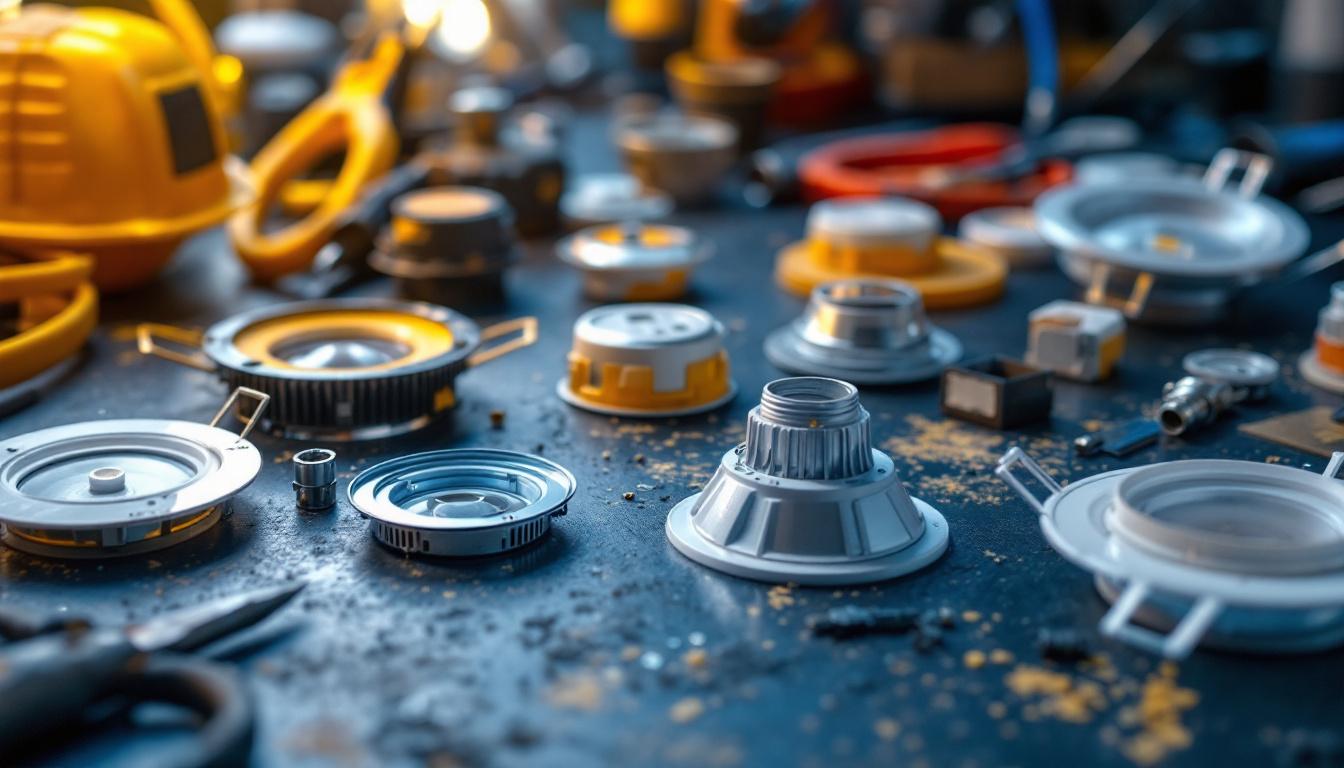
In the ever-evolving world of lighting technology, the introduction of high-lumen LED lamps has transformed the landscape for lighting contractors. With a brightness of 12500 lumens, these lamps offer unprecedented illumination, making them ideal for a variety of applications, from commercial spaces to large outdoor areas. However, the integration of such powerful lighting solutions comes with its own set of challenges that contractors must navigate.
This article delves into the top challenges faced by lighting contractors when working with 12500 lumen LED lamps, providing insights and solutions to help professionals adapt to this advanced technology.
One of the primary challenges contractors encounter is ensuring proper heat management. High-lumen LED lamps generate significant heat, which can affect both the performance and longevity of the fixtures. Effective thermal management solutions, such as heat sinks and proper ventilation, are essential to prevent overheating and ensure that the lamps operate efficiently. Contractors must be well-versed in the specifications of these products to implement suitable cooling systems that maintain optimal performance over time.
Additionally, the installation of 12500 lumen LED lamps often requires a reevaluation of existing electrical systems. These high-output lamps may demand different voltage and wattage specifications compared to traditional lighting solutions. Contractors must assess the current electrical infrastructure to ensure compatibility, which may involve upgrading wiring or circuit breakers. This not only adds to the complexity of the installation process but also necessitates a thorough understanding of local electrical codes and regulations to ensure safety and compliance.
One of the primary challenges for lighting contractors is understanding the technical specifications of 12500 lumen LED lamps. Brightness is a crucial factor, but it is equally important to consider the efficiency of the lamp. High-lumen LEDs can consume a significant amount of power, and contractors must ensure that the electrical infrastructure can support this demand.
Moreover, efficiency ratings, such as lumens per watt, play a vital role in determining the long-term cost-effectiveness of a lighting installation. Contractors must be well-versed in these specifications to provide accurate recommendations to clients, ensuring they achieve the desired brightness without incurring excessive energy costs. Additionally, it is essential to consider the lifespan of the LED lamps, as longer-lasting options can further reduce replacement costs and maintenance efforts. Understanding the balance between initial investment and ongoing operational expenses can help contractors guide their clients toward more sustainable choices that benefit both the environment and the budget.
Another technical aspect that can pose challenges is the color temperature of the LED lamps. Ranging from warm to cool tones, the choice of color temperature can significantly affect the ambiance of a space. Lighting contractors must understand the implications of these choices, as they can influence mood, productivity, and even safety in certain environments.
Furthermore, the quality of light emitted by the lamp, including its Color Rendering Index (CRI), is essential for applications where color accuracy is crucial, such as in art galleries or retail spaces. A higher CRI indicates that colors will appear more vibrant and true to life, which can enhance the shopping experience or the display of artwork. Contractors must educate clients on these factors to ensure the selected lighting meets their specific needs. Additionally, the integration of smart lighting technologies can offer clients the ability to adjust color temperature dynamically, further enhancing the versatility of the lighting design and allowing for tailored environments that adapt to various activities throughout the day.
12500 lumen LED lamps are often larger and heavier than traditional lighting solutions. This can create installation challenges, particularly in existing structures that were not designed to accommodate such fixtures. Contractors must assess the mounting locations and ensure that they can support the weight and size of the lamps without compromising safety or aesthetics.
Additionally, the installation process may require specialized equipment or techniques, particularly for high-ceiling applications. Contractors must be prepared to invest in the necessary tools and training to ensure a successful installation. For instance, using scaffolding or lift equipment may be essential to safely reach elevated areas, and this can add complexity to the project. Moreover, the physical dimensions of these lamps can also affect the overall lighting design; contractors must carefully consider the distribution of light and how it interacts with the space, ensuring that the illumination is both effective and visually appealing.
Another significant challenge is ensuring electrical compatibility. High-lumen LED lamps may require specific voltage and current levels, and contractors must verify that the existing electrical systems can handle these requirements. This often involves upgrading wiring or circuit breakers, which can add to project costs and timelines.
Furthermore, understanding the compatibility of LED drivers and dimming systems is essential. Not all LED lamps function well with existing dimming technology, and contractors must be knowledgeable about the latest advancements in LED drivers to provide clients with the best options. This includes being aware of the differences between phase-cut dimming and 0-10V dimming systems, as well as the importance of selecting drivers that minimize flicker and provide smooth dimming capabilities. Additionally, contractors may need to educate clients on the benefits of smart lighting controls, which can enhance energy efficiency and user experience, making it crucial to stay updated on the latest trends and technologies in the lighting industry.
As the demand for energy-efficient lighting solutions grows, so do the regulations governing their use. Lighting contractors must stay informed about local, state, and national energy efficiency standards that apply to 12500 lumen LED lamps. Non-compliance can lead to fines and project delays, making it imperative for contractors to understand the legal landscape. These regulations often evolve, reflecting advancements in technology and shifts in public policy aimed at reducing carbon footprints. Therefore, regular training and updates on regulatory changes are essential for contractors to remain competitive in the marketplace.
Moreover, many clients are increasingly concerned about sustainability and environmental impact. Contractors who can demonstrate compliance with energy efficiency regulations are more likely to win projects and build trust with clients. In addition to regulatory compliance, many contractors are now adopting voluntary standards such as LEED (Leadership in Energy and Environmental Design) certification, which can further enhance their marketability. By integrating energy-efficient practices into their projects, contractors not only contribute to a greener future but also position themselves as leaders in the industry, attracting clients who prioritize sustainability.
Safety is a paramount concern in any lighting installation. High-lumen LED lamps often come with specific safety standards that must be adhered to during installation and operation. Contractors must ensure that their work complies with these standards to protect both their team and the end-users of the lighting systems. This includes not only the physical installation but also the selection of appropriate fixtures and materials that can withstand the operational demands of high-output lighting.
This includes understanding the fire safety regulations related to high-output lamps and ensuring proper ventilation and heat dissipation. Failure to comply with safety standards can result in hazardous situations, liability issues, and damage to the contractor’s reputation. Furthermore, contractors should conduct regular safety audits and risk assessments to identify potential hazards before they become critical issues. Engaging in ongoing education about the latest safety technologies and practices can also empower contractors to implement innovative solutions that enhance the safety and efficiency of their installations. By prioritizing safety, contractors not only protect their workforce but also foster a culture of accountability and professionalism that resonates with clients and stakeholders alike.
One of the most significant challenges for lighting contractors is managing the cost implications of installing 12500 lumen LED lamps. The initial investment can be substantial, leading some clients to hesitate when considering such powerful lighting solutions. Contractors must be adept at communicating the long-term savings associated with energy-efficient lighting, including reduced electricity bills and lower maintenance costs.
Providing a comprehensive cost-benefit analysis can help clients understand the value of investing in high-lumen LED technology. This analysis should include potential rebates or incentives for energy-efficient upgrades, which can further alleviate the financial burden on clients.
In many cases, the installation of high-lumen LED lamps may necessitate upgrades to existing electrical systems or infrastructure. Contractors must factor these additional costs into their project budgets and be transparent with clients about potential expenses. This requires careful planning and a thorough understanding of the project scope.
Moreover, unexpected costs can arise during installation, such as the need for additional materials or labor. Contractors should be prepared to manage these contingencies effectively to avoid budget overruns that could jeopardize the project.
Effective communication with clients is essential when working with 12500 lumen LED lamps. Many clients may have misconceptions about the capabilities and limitations of high-lumen lighting. Contractors must take the time to educate clients on what to expect, including the potential for glare, heat output, and light distribution.
Setting realistic expectations can help prevent misunderstandings and dissatisfaction with the final results. Contractors should provide visual aids, such as lighting simulations or mock-ups, to help clients visualize the impact of the lighting design.
Once the installation is complete, ongoing support and maintenance become critical. High-lumen LED lamps, while generally low-maintenance, may still require periodic checks and adjustments to ensure optimal performance. Contractors should establish a maintenance plan and communicate this to clients, emphasizing the importance of regular upkeep.
Offering maintenance services can also create additional revenue streams for contractors, fostering long-term relationships with clients and enhancing their reputation as reliable lighting professionals.
Working with 12500 lumen LED lamps presents a unique set of challenges for lighting contractors. From understanding technical specifications to managing installation complexities and regulatory compliance, professionals must navigate a multifaceted landscape to deliver successful projects. By staying informed, communicating effectively with clients, and embracing ongoing education, contractors can overcome these challenges and harness the benefits of high-lumen LED technology.
Ultimately, the ability to adapt to these advancements will not only enhance the contractor’s skill set but also contribute to the overall success of their business in a competitive market. As the demand for energy-efficient and powerful lighting solutions continues to grow, those who can effectively address these challenges will be well-positioned for success.
Ready to tackle the challenges of high-lumen LED lighting installations with confidence? At LumenWholesale, we’re here to support your journey with premium 12500 lumen LED lamps and a vast array of lighting solutions that meet your project’s needs. Benefit from our industry-leading prices, exceptional quality, and the convenience of free shipping on bulk orders. Elevate your lighting game and give your clients the best value by choosing Wholesale Lighting at the Best Value with LumenWholesale. Your success is our business.

Explore the evolution of recessed lighting with a focus on the shift to electronic ballasts.

Discover effective strategies for training your team in selecting and installing affordable ceiling lights.

Discover how understanding recessed can light parts can lead to significant cost savings for lighting contractors.

Explore essential tips and common pitfalls for lighting contractors navigating pole switch installations.